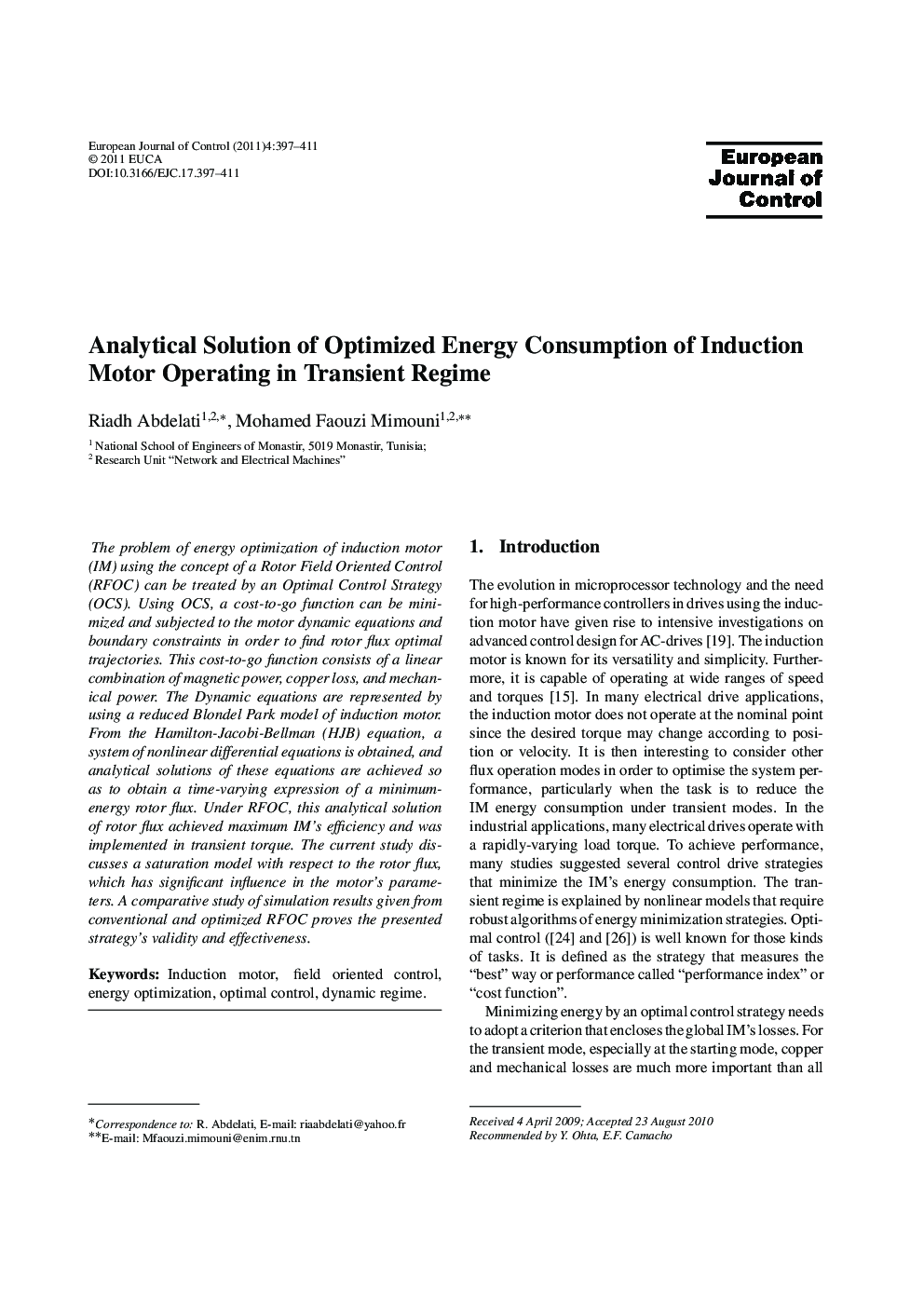| Article ID | Journal | Published Year | Pages | File Type |
|---|---|---|---|---|
| 707581 | European Journal of Control | 2011 | 15 Pages |
The problem of energy optimization of induction motor (IM) using the concept of a Rotor Field Oriented Control (RFOC) can be treated by an Optimal Control Strategy (OCS). Using OCS, a cost-to-go function can be minimized and subjected to the motor dynamic equations and boundary constraints in order to find rotor flux optimal trajectories. This cost-to-go function consists of a linear combination of magnetic power, copper loss, and mechanical power. The Dynamic equations are represented by using a reduced Blondel Park model of induction motor. From the Hamilton-Jacobi-Bellman (HJB) equation, a system of nonlinear differential equations is obtained, and analytical solutions of these equations are achieved so as to obtain a time-varying expression of a minimumenergy rotor flux. Under RFOC, this analytical solution of rotor flux achieved maximum IM's efficiency and was implemented in transient torque. The current study discusses a saturation model with respect to the rotor flux, which has significant influence in the motor's parameters. A comparative study of simulation results given from conventional and optimized RFOC proves the presented strategy's validity and effectiveness.
